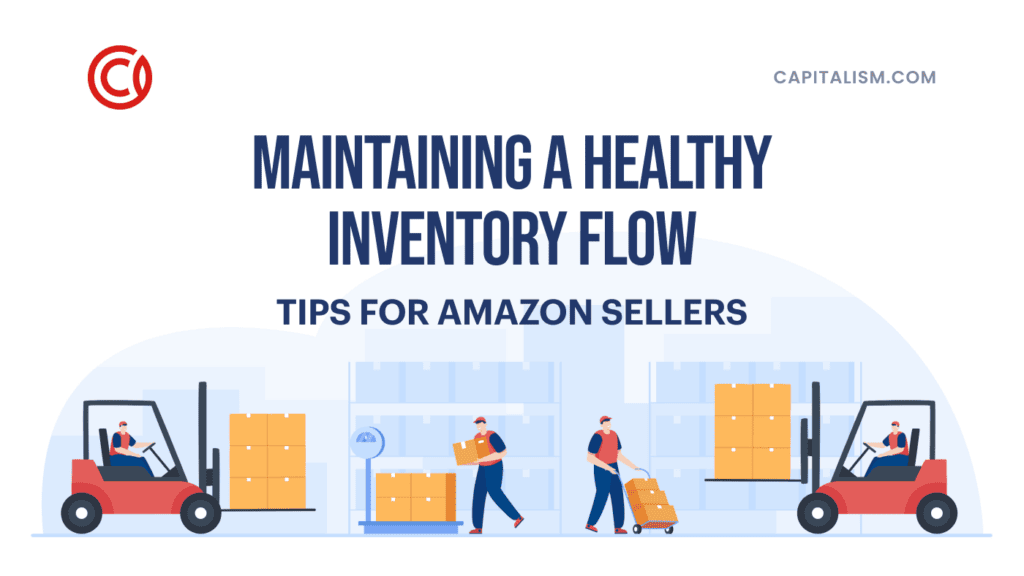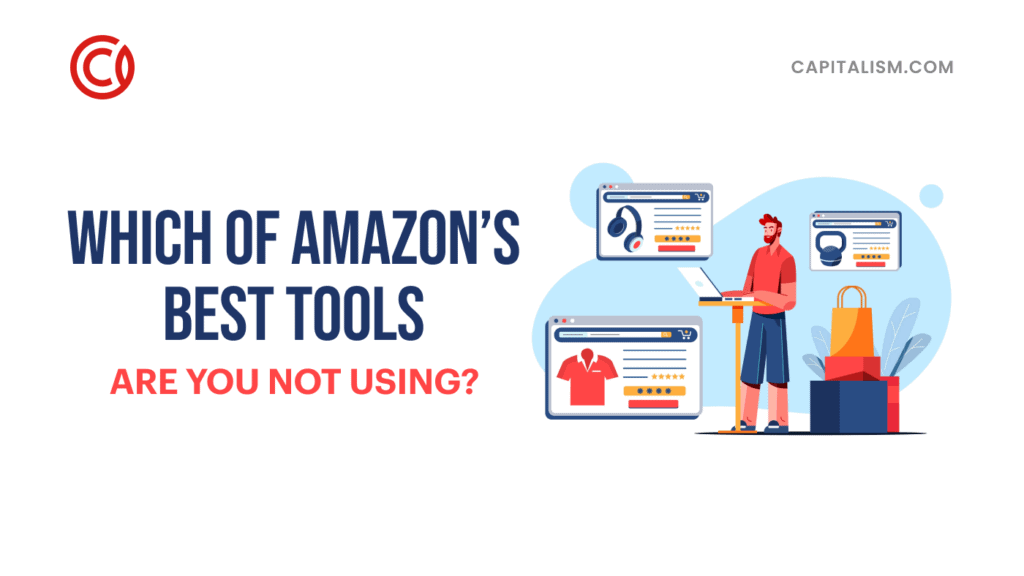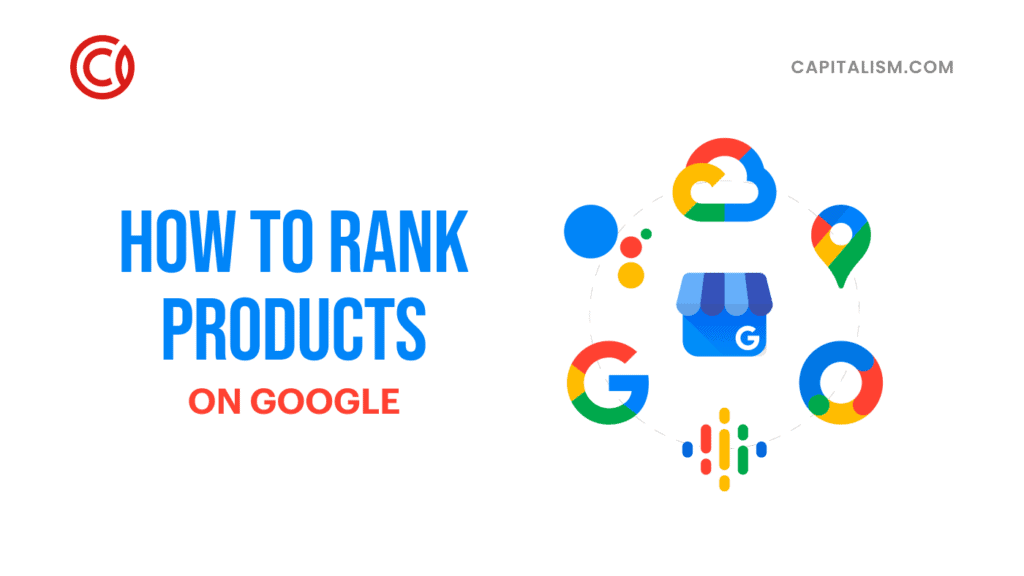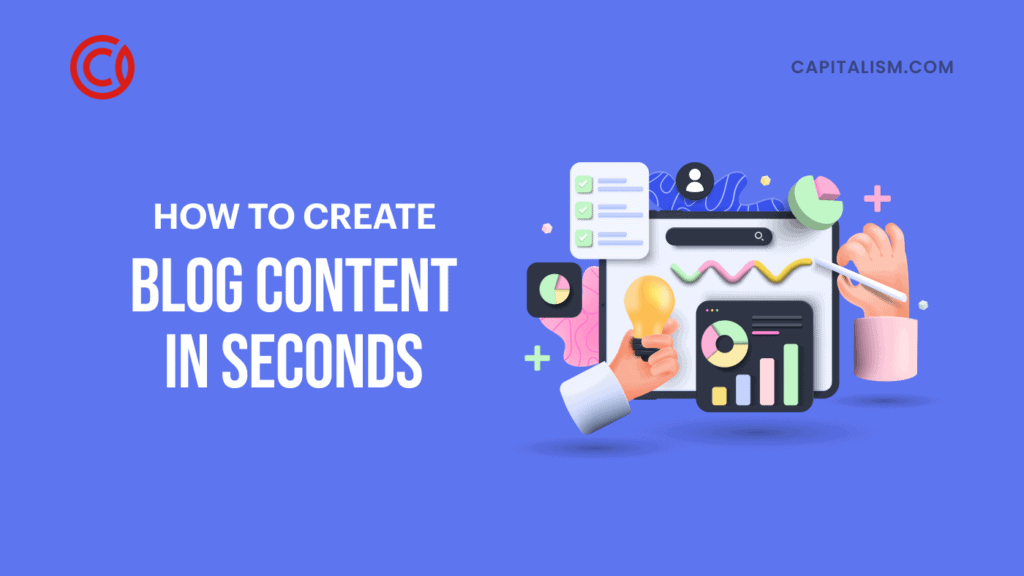Here’s how to make money with website flipping in 2020
Flipping products for a profit is a business practice probably familiar to you. If you watch HGTV, you can watch couples renovate fixer-upper houses and sell them for a hefty profit. You can patch up old vehicles and splash on a new paint coat before flipping it for a premium.
Buy low, improve, and flip it for a higher price. Rinse and repeat, and you have a profitable side hustle or even a full-time income if you dedicate yourself.
In this digital age, flipping opportunities have moved onto the web. Instead of flipping physical products, you can learn how to make money with website flipping. If you’ve followed internet marketing gurus who flip or gone down the rabbit hole of a website flipping Reddit, you’ve probably got questions about this business model.
In this article, we’ll give you a quick lesson on how to make money through website flipping.
What is Website Flipping?
Website flipping is the process of buying a website, improving it, and then selling it at a profit. Website flippers purchase underperforming websites with untapped potential. Next, they “upgrade” the site by optimizing it for SEO and monetization. After priming the website for driving traffic and generating revenue, website flippers can sell the website at a significantly higher than the initial purchase price.
How Much Can I Sell a Website For?
Determining the price of your website can be challenging to calculate. Do you take a website flipping course to learn how? Do you price it at face value? Or do you rate it by its potential? According to Forbes, a good rule of thumb is to sell your website at 24-36x the monthly revenue. They provide the example that if your website brings in monthly revenues of $1,000, then you might want to price it within the $24,000 to $36,000 range.
If you’re working on several sites at a time and selling them within this price range, you can easily hit six figures by flipping websites.
How to Make Money with Website Flipping
With website flipping 2020 opens new opportunities for entrepreneurs, especially for those with an eye for design and marketing. Here are the steps you need to follow when learning how to make money with website flipping:
Step One: Find a Website
There are several domains and website marketplaces where you can buy a website, like Flippa and WebsiteBroker (more on these later). Here are a few tips to consider when browsing website selections for flipping.
Choose a Profitable Niche
Many marketers advocate for: the more niche, the better. While the competition can be lower in certain niches, you must confirm that there’s a sizeable market. When website flipping, you don’t want to create a new audience. Instead, capitalize on an existing market — the bigger, the better — and then optimize your website to maximize traffic and revenue.
Some big umbrella niches to consider are:
- Travel
- Food/cooking
- Business
- Personal finance
- Personal development
- Health and wellness
- Technology
Within each niche, you can also dive into micro-niches. For example, if you choose the technology industry, you can choose a niche with drones. If the food industry is more your preference, a niche in vegan recipes might interest you. Again, remember to choose a profitable niche with a large pool of paying customers. Choosing the right niche is the first crucial secret for how to make money with website flipping.
Also, consider relying on your experience. If you know a specific industry, this insight can help you tailor your content and marketing strategy.
Prioritize Moderate Tweaks Over Massive Overhauls
When buying a new house, you find one with “good bones.” For digital real estate, the same wisdom applies. The ideal website should already have structures in place that just need improving. If you want to learn how to make money with website flipping, here are a few “good bones” to look for in your search:
- Decent traffic per month
- Regularly published content (might need optimizing)
- Domain authority
- A sizeable email list
- Keyword Ranking (Note: digital marketer Neil Patel prefers that the website NOT be optimized for SEO. This will give you more flexibility for incorporating your own SEO practices).
Look Out for Community-Driven Sites
Communities are often organically built into certain niches, like crossfitters or computer gamers. Often, these website owners are hobbyists without systems to monetize their sites. For those who know how to make money with website flipping, access to an engaged audience is like striking a gold mine. Your next step would be to optimize the content and create systems, like sales funnels and opt-in forms, to make money.
Snatch Domain Names with Strong Keyword Presence
Sometimes the domain name itself is worth thousands of dollars, without even needing to build a website for it. Imagine snatching the domain names that contain highly-searched terms like howtoblog.com or makemoneyonline.com while the internet was still in its infancy. You have the potential to sell that domain name for a generous profit. So, hunting for great domains is a key part of how to make money with website flipping.
Target Solo-Webmasters
Purchasing websites that already rank on the first page of Google can be nearly impossible. These websites are often well-managed by teams of professionals. Even if these websites were for sale, they’d likely have a hefty price tag attached.
Find the one-person websites that regularly upkeep their websites but could use a little more TLC. You can often buy these sites at a significantly lower price, which can increase your profit margins and add to your bottom line.
Consider a Website Broker
Unlike auction-style platforms, like Flippa, a website broker goes directly to the parties to strike a deal. If you want to skip the “shopping around” as you figure out how to make money with website flipping, pay a broker to do it for you. A broker will:
- Research websites that meet your criteria
- Screen potential sellers of websites
- Prepare an information memorandum, which documents the website’s statistics (traffic, email list size, financials, and more)
- Value the website
- Deliver the formal offer between the parties
- Help the parties complete the transaction and transfer ownership
However, brokers will take a cut of the sale, which can reduce your bottom line.
Step Two: Negotiate with the Website Owner

You’ve found a website you’re interested in buying. Now it’s time to contact the website owner through the website marketplace or broker and negotiate the sale.
Compile and analyze your research to determine a fair price point. Depending on whether you’re dealing with an individual or a full-fledged business, the negotiation process can be lengthy.
Smart website owners will research how much their assets are really worth. The negotiation process stretches as more potential buyers put counter-offers on the table. If you’re unable to arrive at an agreed price point, remember that you’re not obligated to purchase.
There are millions of other website flipping opportunities out there. Sometimes, you’ll need to cut your losses with the time spent researching and negotiating so that you can strike at the next opportunity as quickly as possible. After all, one secret of how to make money with website flipping is to remember: Sometimes the best deals are the ones we don’t do.
On the other hand, some website owners will be thrilled that somebody is interested in purchasing their website. These types of buyers tend to have gaps in their publishing schedule and are generating little to no profit. If this is the case, you’ll often arrive at a favorable price point.
Transfer Ownership of the Website
After negotiations reach an agreement, it’s time to transfer ownership of the website. Within this step, you’ll want to draw up a contract that includes the following details:
- The domain name and registration details
- Business name
- Business entity information (i.e., limited liability company or corporation)
- Third-party software and subscriptions updated with your information
Make sure the contract is signed and dated.
You’ll also want to remember to download the email list if they’ve built a following. Download the email list, and be sure to save a backup copy. The email list will give you a strong foothold to execute your marketing strategy.
Step Three: Improve the Website
If you’ve successfully purchased the website, congratulations! You are now the proud owner of digital real estate. It’s time to improve the site so that you can flip it for profit. Here are some strategies to help you with the digital renovations:
Assess the “Before” Picture
Before you construct a building, you need a blueprint. Before you bake a cake, you need a recipe. It’s the same with website flipping.
Know what you’re working with, so you can customize your business plan. An objective assessment will expose the website’s weaknesses and how you can strengthen them.
For example, take a look at the website’s design. Are the website visuals aligning with the brand? A meditation website that uses bright reds and fluorescent yellows can seem more distracting. Soothing tones of blue and lavender are usually more “on-brand” for meditation websites. Customize your color scheme to express your brand and trigger the desired emotions.
Website navigation is also essential. Your website’s font should be easy to read. Use website heatmaps to understand how visitors interact with your website and where they’re clicking. This information can help you redirect the flow of traffic to your high-traffic articles and sales funnels.
Improve Your SEO
Search engine optimization (SEO) increases your website’s chances for ranking higher on search engines, like Google or Amazon. The higher you rank on search engines, the more likely somebody will click on your website. One study shows that 95% of web traffic goes to sites ranked on page one of Google. If you can secure a spot on the first page for a target keyword, the value of your website can skyrocket.
One way to improve your SEO is to publish helpful content optimized for specific keywords. For example, a website about gardening can publish a roundup post optimized for the keyword “best indoor houseplants.” As your website slowly climbs its way to page on search engines, you can gradually build your audience and industry authority.
Another way to improve your SEO is by guest blogging on authoritative websites. Including a backlink to your site can grow your domain authority.
Choose a Mobile-Friendly Theme
Today, a website theme that looks flawless on a laptop is hardly enough. Mobile phones can do nearly everything a laptop can — reading articles, watching videos, shopping — while being compact and portable. A website that isn’t responsive on mobile devices can sabotage your website’s sales and traffic.
When browsing website themes or hiring a website designer, emphasize your need for a mobile-friendly website design. If it isn’t, buyers will likely pass on your website for another website that is.
Upgrade Your Sales Funnels
Think of a sales funnel as a slide. Each interaction with your brand brings the customer one step higher on the ladder. When they reach the top, a gentle nudge — your sales pitch — slides them down, and they finally make a purchase.
You’ll want this process to be as seamless as possible to optimize the customer experience and maximize revenue. During your website optimization, analyze the existing sales funnels.
What does the email opt-in form look like? Is there one present at all? If there is, where is it positioned? An email opt-in form hiding in a cluttered sidebar will likely capture fewer emails than one that is front and center with an enticing lead magnet.
Next, take a look at their email sequences. How can you tailor each email sequence to slowly build rapport with the customer before you finally ask them to buy from you?
Check if the previous website owner ran any ad campaigns. Analyze the quality of those ads. Are they using striking colors and ad layouts? Is the ad directing them to an optimized landing page, or is it sending them to your website’s homepage?
Your website’s sales funnels are central to driving traffic and revenue to your site. Dedicating extra time to this step will benefit you when it’s time to sell your website.

Step Four: Sell Your Website on an Online Platform
There are several online platforms for buying and selling websites, like Flippa and Freemarket. Even if you optimize your website, you still need to close the sale. Improve your chances by optimizing your website’s listing. When creating the listing for your website, here are a few guidelines worth considering:
Description Sells
The sheer availability of information on the internet encourages more buyers to research before actually buying anything. Selling your website is no exception. If you want to position your website for the best chances of closing a sale and at a favorable price, be descriptive in your listing. Think about how interested buyers might react if your listing is missing key information. They might think you’re hiding something and scamming them out of their money.
Use Data and Statistics to Sell Your Website
According to Gary Vaynerchuk, attention is the most valuable asset a business can have. It’s a commodity that every business is fighting more. If your website has cultivated an engaged following, then this asset drives up the value of your website. If you have an email list with a high open-rate, put that data front and center. If several pages on your website have excellent ratings on search engines, make that clear on your listing.
Sell to Your Audience
A marketing strategy for a middle-aged homemaker will be vastly different from a racing enthusiast in his late twenties. Know your audience before selling to them. Many website flippers make the mistake of using general marketing tactics when selling your website. When you’re selling your site on one of these online marketplaces, remember who your audience is.
Skip the Fluff
Overloading your listing with useless data and subjective claims like “best blog in the health market” does little to highlight your website’s strengths. Instead, dive straight into the heart of how your website is optimized to generate revenue and drive traffic.
Remember, the type of people purchasing websites are probably other marketers. They know what sales copy looks like — it’s what they do for a living! Instead, do them a favor and list the critical information clearly and concisely.
Be Responsive
Being communicative and considerate goes a long way in closing a deal. If a potential buyer reaches out to you with questions, take the time to answer their questions thoroughly and politely.
Your sales funnels are optimized to build positive rapport with your target audience. Adopt the same philosophy when you’re selling your website. Each interaction with an interested buyer allows you to sell your website, provide additional data, and address any of their concerns.
Website Flipping Pros
Website flipping can be a profitable side hustle or full-time income source for the right entrepreneur. Here are some pros to consider if you’re thinking about website flipping:
Low Capital Investment
Other types of business models can often require you to take out loans with the bank or SBA. This startup money helps you secure the real estate, hire employees, pay overhead costs, and more.
Website flipping has a smaller initial capital investment. You can often buy a domain name or an existing website for a couple of hundred dollars. Paying professional web designers and copywriters might cost a few thousand dollars. Website flipping isn’t cheap, but the startup costs are considerably less than a traditional brick-and-mortar business.
The lower financial entry barrier makes website flipping accessible to more people and can be a profitable business venture for a marketing-savvy entrepreneur.
Low Barrier to Entry
In this digital age, knowledge is so easily accessible — and free! You can teach yourself everything you need to know about building a website, optimizing it, and then monetizing it. Online platforms for buying and selling businesses, like Flippa, also make the transaction quick and easy.
If you’re willing to invest your time, energy, and some capital, you can start flipping websites whenever you’re ready.
Market Demand
The age of the internet is still young. As more businesses build an online presence, many of their websites are still lacking. Some sites look like they’re still stuck in the nineties: hard-to-read fonts, clunky website layouts, and confusing or absent marketing funnels.
If you’re familiar with what it takes to create a profitable website, you can tap into a lucrative market. Businesses will pay you for websites that drive traffic and add to their bottom lines.
Website Flipping Cons
While website flipping has many attractive benefits, there are a few cons to be mindful of:
Significant Time Investment
Depending on how much work your website needs, it can take time before it’s ready for the auction house. A study by Ahrefs showed that it took 61 to 182 days for a page to rank for a specific keyword. That means it could take anywhere from two months to half a year before your SEO efforts pay off. If you decide to go into website flipping, remember that you’ll be entering a long-term game that demands patience.
Need for Outsourcing
If you’re unfamiliar with web design, copywriting, and other website development-related skills, then you’ll likely need to outsource these tasks. While this may increase efficiency, you need to pay these professionals, which subtracts from your bottom line.
No Guarantee of Success
Even if you’ve purchased a website and optimized it for peak performance, there isn’t any guarantee that it will sell at the price point — of it would even sell at all. Various factors could affect the profitability of selling your website.
For example, if you purchase a website domain name that focused on fidget spinners, you might find it challenging to sell in 2020. It was a fad that fizzled out a few years ago, and demand today is low.
Improve your chances of a successful sale with extensive research at the very beginning. Confirm that there’s an existing market in a profitable industry that would be interested in purchasing your website.
Where Can I Buy and Sell Websites?
If you’re confused about what marketplace to sell your website on, don’t worry. We’ve listed three popular choices and their respective commission fees for you below.
Flippa
In the website flipping world, Flippa has risen among the top as a staple brand. It was the first marketplace focused on buying and selling domain names and websites. Flipping websites on Flippa is easy with their user-friendly interface. Also, you can buy and sell websites at any price range. Many users have praised Flippa for how easy it is to navigate — you can have your website listing up and active within 10 minutes of signing up.

However, Flippa also has its disadvantages. While this marketplace is accessible for all budgets, it also opens the floodgates for low-quality products and scammers. There are many negative reviews where users were scammed out of their money. When buying or selling online, exercise extreme caution, and always do your research. Don’t just look for places where flipping websites cheap is the main selling point.
Here is a breakdown of Flippa’s commission fees:
- Up to $499,000: 10%
- $500K to $1M: 7.5%
- $1M - $5M: $5%
Afternic
Afternic was founded in 1999, and this online platform is widely known for buying and selling domains. Currently, they have more than five million domain names for sale and have experienced over 75 million domain searches on their site. Many users choose Afternic for how quick the transfer of ownership is. This convenience is mainly due to their partnership with GoDaddy, a domain registrar, and a web hosting company. However, there are some negative reviews where funds were held in escrow for too long, and the website layout can be difficult to navigate.
Here is a breakdown of Afternic’s commission fees:
- Up to $5,000: 20% ($15 minimum)
- $5,001 to $25K: $1,000 + 15% of amount over $5,000
- $25K+: $4,000 + 10% of amount over $25,000
Freemarket
Founded in 1999 by Sam Kinney, Freemarket is making it easy for entrepreneurs to buy and sell websites. The simple, easy-to-use platform lets you sell digital properties without paying a listing fee.
Free Market has the lowest commission fee compared to the previous two marketplaces. They call it a “Success Fee,” and they will take 5% of the selling price. With zero listing fees and a low commission fee, Freemarket can be an attractive option for more considerable savings.
Website Broker
Founded in 1997 by two California attorneys, Website Broker was created to encourage a smoother transaction for the sale of domains and websites. Similar to other online marketplaces, Website Broker has received some negative reviews about scamming on their site. Again, the risk of running into a scam is present on whichever platform you use. Make sure you thoroughly research whom you’re entering into a transaction with before committing.
Website Broker does not charge any commission fee at all. According to their FAQ, you do not owe any amount upon the successful sale of your website. Instead, they make money by charging a standard listing fee of $9.95. You can also upgrade to a premiere listing for $14.95, which offers better exposure for your website listing.
Building vs. Flipping a Website
While building a website isn’t exactly “flipping” an old site, it’s still a viable and profitable method for selling sites. Here are some points to consider in the build vs. flip debate for websites.
If you build a website, you can make all the decisions from scratch. You create the site exactly how you envision it. Also, the cost to buy a domain name is often less than buying an existing website someone already owns. This can add a couple of hundred dollars to your profit margins.
If you buy a fixer-upper website, you’re taking on a work in progress. Sometimes, the site is already in fair shape and just needs some moderate improvements. Other websites require more work, and the rebuilding process can be more time-consuming. Also, a website with an existing audience can make it a more attractive option over building an email list from scratch.
Is Domain Flipping Still Profitable?
Of all the information you’ve learned, the answer to this question is probably your most important. After all, it will indicate whether all this work is worth it.
Absolutely.
As more businesses go digital, the demand for digital real estate is increasing. Domain traders often snag several domain names and then sell them at a profit without even building the website. If you take the time to develop or optimize the site, especially with a short domain name with popular keywords, you can net significant profits.
Final Thoughts
When learning how to make money with website flipping, it’s best to dive in knowing that most sites will be an intermediate to long-term investment of your time and resources. After all, Google’s ranking algorithms and the size of your email list may take several months to produce the results that you want.
With that said, flipping websites can be a perfect fit for the right entrepreneur, especially if they have a solid grasp of SEO and marketing. Taking something old or underperforming and transforming it into a monetization machine can be deeply rewarding.
In The One Percent, we teach our members how to build six-figure businesses online. If you want to design a life that is rooted in passion, entrepreneurial grit, and creating value, then join The One Percent.
Flipping websites is just one way to make money online. In The One Percent, we recently took a deep dive into how to make money by buying businesses - either buying the business to run for the long-term or to grow and sell for a profit. To learn more about buying online or brick and mortar businesses, join us and look for the December issue, the Business Acquisitions Edition.












